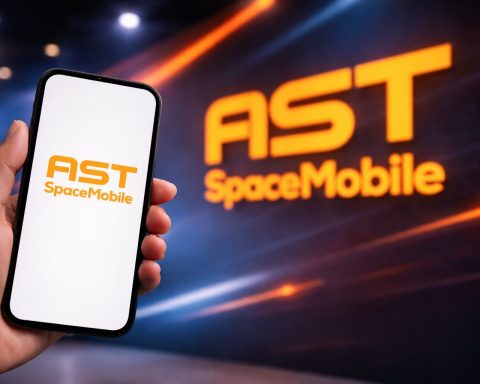- In 2025, market research must demonstrate ROI by linking insights to tangible business outcomes such as increased revenue, reduced costs, or improved customer satisfaction.
- Nearly 60% of researchers report their organizations depend on insights more today than a year ago.
- 83% of researchers say their organizations plan to significantly increase AI investment in 2025.
- Andreessen Horowitz (a16z) notes that AI has increased the pace and decreased the cost of surveying, with survey design and question adaptation happening in hours instead of weeks.
- Synthetic data and “virtual respondents” can simulate responses for experts like CFOs or cardiologists in minutes.
- AI acts as a “virtual team member” by automating data cleaning, transcription, basic charting, and preliminary analysis, with nearly 90% of researchers regularly using AI tools.
- Tableau with AI, Tableau GPT/Pulse, provides natural‑language data questions, automated insights, predictive modeling with Einstein Discovery, and data storytelling.
- Ray Poynter says AI will not replace researchers but redefine their roles by automating repetitive tasks so researchers can focus on strategy.
- Ethical AI guidelines are being developed by ESOMAR and Insights Association, emphasizing human oversight, transparency, data protection, and bias testing.
- A typical AI toolkit for market research combines ChatGPT (GPT-4) for drafting reports, Google Bard (PaLM 2) for live data, and Tableau GPT/Pulse for visualization.
What Is Market Research and Why It Matters in 2025
Market research is the process by which organizations gather data and generate insights about their customers, competitors, and market environment [1]. In 2025, this process is more critical than ever. Businesses face rapidly shifting consumer behaviors, emerging technologies, and fierce competition, so they rely on market research to inform every strategic decision. In fact, nearly 60% of researchers report that their organizations depend on their team’s insights more today than just a year ago [2]. Market research teams have evolved from being mere data providers to becoming strategic partners in the business, sharpening decision-making, illuminating customer needs, and helping maintain a competitive edge [3].
What’s different in 2025 is the heightened demand for actionable, ROI-driven insights. Companies don’t just want data; they want clear connections between research findings and business outcomes. “Market research has always been about uncovering truths that drive better decisions, but in today’s environment, it’s equally about proving its worth in measurable terms,” says Nadja Böhme, CEO of Factworks. “This means not only delivering insights but also connecting those insights to tangible business outcomes…” [4]. In other words, a market research report in 2025 must demonstrate value – showing how insights can increase revenue, reduce costs, or improve customer satisfaction.
Additionally, the industry has recognized that quality insights drive success. One recent trends report emphasizes that data-driven decisions are fueling success in an increasingly competitive business environment [5] [6]. Research leaders who embrace innovation and new tools (like AI) are securing larger budgets and greater influence within their organizations [7] [8]. In 2025, to “stay ahead of the curve,” market research must deliver fast, accurate, and actionable intelligence that directly informs strategy [9]. This means leveraging all available resources – especially the latest advancements in artificial intelligence – to revolutionize how we gather and interpret market insights.
The Role of AI in Modern Market Research
Artificial intelligence has become a game-changer in how market research is conducted in 2025. AI is reshaping how researchers gather, analyze, and act on data, introducing new efficiencies as well as new challenges [10]. Among marketing functions, market research is emerging as one of the most exciting areas to apply generative AI and machine learning tools [11]. The integration of AI-powered tools is rapidly changing the insights landscape: traditional research methods are being augmented by digital techniques, enabling more cost-effective data collection and deeper qualitative insights through remote and automated means [12].
One of AI’s biggest contributions is speed and scale. Tasks that used to take weeks – designing surveys, recruiting participants, parsing large datasets – can often be done in hours or days with AI. For example, AI can generate survey questions in moments and even adapt them on the fly based on responses. Analysis that once took analysts countless hours now happens almost in real time. As Andreessen Horowitz notes, “AI has already increased the pace and decreased the cost of surveying. AI makes it easy to generate surveys quickly and adapt questions in real time… Analysis that once took weeks now happens in hours.” This shift expands the scope of decisions that can be informed by data, since even small or rapid decisions can leverage quick AI-driven research [13]. The result is that more teams across a company – from marketing and product to sales and customer success – can tap into insights regularly, not just for big annual studies [14].
AI is also enabling new methodologies. One notable trend is the rise of synthetic data and “virtual respondents.”Using generative AI, researchers can simulate respondents to answer surveys or model consumer behavior. These AI-generated respondents (based on training data from real-world patterns) can provide quick feedback, especially in hard-to-reach audiences or hypothetical scenarios [15] [16]. For instance, instead of waiting weeks to get 100 CFOs or cardiologists to respond to a survey, an AI model trained on how these experts behave could simulate their responses in minutes [17]. Synthetic data offers potential solutions to problems of survey fatigue, privacy, and panel quality [18] [19]. However, experts urge caution: “Synthetic data shines in areas with established trends… But for novel or niche areas, it’s still catching up. It’s a promising tool, but we need to be cautious about relying on it just yet. It’s still up to us researchers to critically evaluate and validate results.” [20]. In practice, synthetic data is viewed as a complement to traditional methods rather than a replacement [21], and many researchers combine AI-generated insights with real-world data to ensure validity [22].
Another way AI contributes is by acting as a “virtual team member.” Researchers are increasingly delegating mundane or labor-intensive tasks to AI. Data cleaning, transcription, basic charting, and even preliminary analysis can be automated. “Gone are the days when market researchers were encumbered by mundane tasks such as data cleansing and charting,” notes a Qualtrics report – nearly 90% of researchers now regularly use AI tools in their day-to-day work [23]. The biggest reported benefit is that AI enables teams to do more research with the same team size, boosting efficiency [24]. Many organizations are treating AI as an indispensable part of operations: 83% of researchers say their organizations plan to significantly increase AI investment in 2025 [25].
It’s important to note that AI’s role is not just about speed – it’s also about depth of analysis. Machine learning algorithms can detect patterns in complex data that humans might miss, and natural language processing (NLP) can digest vast amounts of text (like open-ended survey responses or social media posts) to summarize sentiment and key themes. AI-driven analysis tools can identify subtle trends or segments in data, offering insights that improve decision quality. For example, AI can analyze unstructured feedback (comments, reviews, interview transcripts) at scale, finding emotional nuances or recurring topics across thousands of comments that would overwhelm human analysts [26]. These capabilities mean AI isn’t just making research faster; in many cases, it’s making it smarter, revealing deeper insights and enabling more data-driven decisions.
Of course, integrating AI into market research also raises new questions. It introduces efficiency and automation, but researchers must balance this with human expertise (more on those considerations later in this report). Leading organizations are encouraging their insights teams to blend technology with human empathy, using AI for what it does best (speed, scale, pattern recognition) while relying on human analysts for interpretation, creativity, and strategic thinking [27]. The bottom line: in 2025, AI is not replacing market researchers; it’s empowering them. As industry expert Ray Poynter puts it, “AI will not replace researchers, but it will redefine their roles. By automating repetitive tasks, researchers can focus on strategic insight generation.” [28]. The following sections will explore the AI tools making this possible, how to apply them step-by-step in a research project, and what challenges to watch out for.
Key AI Tools for Market Research in 2025
Modern researchers have an expanding arsenal of AI-powered tools at their disposal. Some are general-purpose AI chatbots, while others are specialized platforms or analytics tools. Here are some of the key AI tools (and platforms) used in market research today, and what they’re best at:
| AI Tool | Strengths & Best For | Use Cases in Market Research |
|---|---|---|
| ChatGPT (OpenAI GPT-4) | Versatile conversational AI known for detailed, human-like responses [29]. Excels at understanding natural language prompts and producing well-structured text. Best for brainstorming ideas, summarizing large texts, and drafting content. | – Generating research summaries (e.g. condensing a 50-page report). <br/>- Outlining and even writing sections of a market research report (executive summaries, insights narratives) [30]. <br/>- Brainstormingsurvey questions or potential hypotheses about a market. <br/>- Analyzing qualitative data: you can feed customer reviews or interview transcripts and ask for key themes. |
| Google Bard (PaLM 2) | Google’s answer to ChatGPT, integrated with real-time Google Search. Provides up-to-date information from the web [31] and concise answers. Best for getting the latest facts, statistics, or news. Strong multilingual capabilities and Google Workspace integration (e.g. export answers to Docs) [32] [33]. | – Competitive intelligence: quickly pulling recent news or financial data about companies (e.g. “latest e-commerce growth figures 2024”) [34]. <br/>- Checking current trends or consumer discussion topics (since Bard can search live internet). <br/>- Multilingual research: asking questions in or about non-English markets (Bard can handle ~40+ languages) [35] [36]. <br/>- Drafting content and then exporting directly to Google Docs or Gmail for easy sharing [37]. |
| Claude 2 (Anthropic) | An AI assistant focused on being helpful, honest, and harmless. Designed with ethical AI principles [38]. Notably, Claude can handle very large amounts of text (100k+ tokens), making it great for extensive data. Best for reliable, in-depth analysis and digesting large documents. Known to be strong at complex analytical tasks and maintaining context over long conversations [39] [40]. | – Analyzing large datasets or long reports: Claude can ingest hundreds of pages of survey data or multiple focus group transcripts and summarize findings in one go. <br/>- Performing detailed scenario analysis or simulations since it can remember a lot of context. <br/>- Long brainstorming sessions: you can iteratively refine research questions or strategies in a single thread without losing context (useful for complex study designs). <br/>- Because of its emphasis on accuracy and ethics, some prefer Claude for sensitive analysis where a second opinion on bias is needed [41]. |
| Jasper (AI for Marketing) | A platform specifically built for marketing contentgeneration. Uses AI to create copy while allowing brand voice and tone controls [42]. Best forcontent creation tasks: marketing copy, blog posts, social media content, and even report writing with a marketing slant. Jasper provides templates (for ad copy, persona descriptions, etc.) and team collaboration features. | – Report writing and styling: turning raw research insights into polished narratives, blog-style reports, or press releases. Jasper’s tone and style settings help ensure the report aligns with brand guidelines [43]. <br/>- Brainstorming marketing ideas: given research findings, Jasper can suggest campaign ideas or messaging angles that resonate with the identified consumer preferences. <br/>- Creating personas and use cases: generates detailed buyer personas or user scenarios based on research data (e.g. feeding demographic info to get a fleshed-out persona description) [44] [45]. |
| Tableau with AI(Tableau GPT/Pulse) | The popular data visualization platform now infused with generative AI and machine learning. Tableau’s Einstein GPT integration (often called Tableau GPT or Tableau Pulse) allows users to ask natural-language questions of their data and get insights or charts in response [46]. It also provides automated explanations for charts (Data Stories) and predictive analytics (Einstein Discovery). Best for making sense of quantitative data quickly and enabling non-analysts to explore data. | – Conversational data analysis: a researcher or stakeholder can type a question like “Which region saw the highest growth in Q3?” and Tableau GPT will generate the answer with a chart or explanation [47] [48]. <br/>- Automated insight generation: Tableau Pulse proactively surfaces insights (e.g. anomalies, trends) in plain language for business users, which is useful for quickly scanning survey results or sales data [49]. <br/>- Predictive modeling: Using built-in AI (Einstein Discovery) to predict outcomes or scores from your market data (for instance, predicting customer churn or sales forecasts based on multiple variables) [50]. <br/>- Data storytelling: automatically generating narrative summaries of dashboards, so your market research report can include system-generated “key takeaways” from charts [51]. |
Table: Top AI tools and their uses in market research (2025). These tools showcase the breadth of AI applications – from natural language chatbots like ChatGPT and Bard that assist in qualitative exploration, to specialized platformslike Jasper that streamline content creation, and analytics integrations like Tableau’s AI that simplify quantitative analysis.
Of course, these are just a few examples. Other notable tools include Bing Chat (which, like Bard, can search live web data), Perplexity AI (an AI search engine that provides answers with cited sources – great for quick secondary research with evidence [52] [53]), and AlphaSense or Factiva (which use AI to search vast business databases for relevant data). There are also survey-specific AI platforms (like Qualtrics with AI, or SurveyMonkey Genius) that can predict survey performance or suggest question phrasing. The key is to choose the right tool for the task – often, market researchers will use multiple AI tools in combination. For example, one might use Bard to gather the latest market metrics, ChatGPT to summarize the findings and draft the report, and Tableau to visualize the data – stitching together each tool’s strengths.
Step-by-Step Guide: Creating a Market Research Report Using AI
Implementing AI in your research workflow can drastically improve efficiency and insight quality. Below is a step-by-step guide to conducting a market research project with the help of AI, from planning to presentation:
- Identify Your Research Objectives and Audience: Define what you need to learn and why. Are you sizing a market, testing a product concept, or analyzing customer satisfaction? Set clear SMART objectives (Specific, Measurable, Achievable, Relevant, Time-bound) for your study [54]. For example, an objective might be “Determine the market size and 1-year growth forecast for electric scooters in North America.” Also, identify who will read the report – the tone and content may differ for a technical R&D team versus C-suite executives or investors [55]. This will shape your approach (e.g. investors might care more about financial projections, so you’d include those). Knowing your end audience ensures the report will be actionable and relevant to them.
- Gather Data (Primary and Secondary): With objectives set, plan your data sources. Primary research means collecting new data firsthand – e.g. running surveys, interviews, focus groups, or experiments [56]. Secondary research means leveraging existing information – reports, studies, articles, and data already out there [57]. AI can assist in both. For secondary research, use AI search tools to quickly find relevant stats and reports. For example, you might ask ChatGPT or Bard to “summarize the latest industry report on electric scooter sales” or “find recent statistics on urban micro-mobility usage.” These tools can scan countless webpages or documents and pull out key information in seconds (always double-check the sources provided for credibility). For primary research, AI can help design questionnaires – e.g. using ChatGPT to brainstorm unbiased survey questions or using survey platforms that predict question quality. If you’re conducting interviews or focus groups, transcription AI (like Otter.ai or Notta) can turn audio into text instantly, ready for analysis [58]. Modern AI-driven panels can even recruit and conduct chatbot-led surveys with respondents, speeding up data collection. In this stage, think creatively about what combination of data will best answer your objectives, and leverage AI to collect it faster and from a wider array of sources.
- Use AI to Analyze Quantitative Data: Once you have data (e.g. survey results, sales figures, web analytics), AI can accelerate the heavy lifting in analysis. Begin by organizing your data (AI-enhanced spreadsheet tools or Python libraries via AI assistants can help clean and format datasets). For statistical analysis, you can use AI-powered BI tools or even ask AI coding assistants to run analyses. For instance, if you have a spreadsheet of survey responses, you could use an AI like Excel’s Analyze Data feature or a tool like Tableau to automatically highlight notable trends (e.g. correlations, outliers). AI can quickly perform tasks such as segmentation (finding clusters in your data), predictive modeling (e.g. projecting trends or identifying factors that drive an outcome), or anomaly detection (flagging data points that don’t fit usual patterns). An important use of AI here is to identify patterns and insights that might not be obvious. For example, a machine learning model might reveal that a certain combination of factors – say, age + urban location + income – is the strongest predictor of e-scooter adoption. AI can analyze large datasets more quickly (and often more accurately) than manual methods, identifying subtle trends that humans might miss [59]. Always sanity-check AI-driven findings with your own logic and domain knowledge (to ensure they make sense and aren’t artifacts of the data or model). But overall, AI can dramatically compress the time it takes to go from raw numbers to meaningful findings.
- Use AI to Analyze Qualitative Data: Market research often involves qualitative inputs – open-ended survey responses, interview transcripts, social media posts, product reviews, etc. These unstructured data sources are gold mines of insight but traditionally time-consuming to analyze. Here, AI (especially NLP) is a researcher’s best friend. Feed textual data into AI tools to get summaries, sentiment analysis, and theme extraction. For example, if you interviewed 20 customers, you can have an AI model summarize each interview and highlight common themes (likes, dislikes, needs). AI can categorize responses by topic (using topic modeling or clustering) and even identify the emotional tone (are people excited, frustrated, neutral?) [60]. This is extremely helpful for quickly gauging customer sentiment from hundreds of reviews or comments. Some platforms (like Kapiche or Thematic) specialize in AI-driven text analytics for customer feedback, automatically producing dashboards of key themes and sentiment drivers. Even general tools like ChatGPT can be prompted to perform a thematic analysis (e.g. “Analyze these 100 survey comments and list the top 5 recurring issues customers mention.”). One of the 2025 trends is that AI can capture nuance in qualitative data better than before – for instance, picking up on sarcasm or subtlety in social media comments via sentiment analysis techniques [61]. By using AI to sift through qualitative data, you ensure no insight is left behind just because of volume. You, as the researcher, can then focus on interpreting why those themes matter. (Remember to maintain empathy and context; AI can organize what people said, but it’s up to you to understand the human story behind it.)
- Summarize and Generate the Report with AI: Now comes the step of turning analysis into a polished market research report. Generative AI excels at content creation, which can save you a ton of time in report writing. Start with an outline: you can ask an AI like ChatGPT to “Create an outline for a market research report on [your topic]” and include the sections you need (executive summary, background, methodology, findings, conclusions, etc.). Given the analyzed data (and maybe some key bullet-point findings you provide), AI can draft narrative paragraphs for each section. For example, you might feed ChatGPT a table of your results or the key insights you’ve identified, and prompt it to “Write a summary of these findings, explaining the trends and their implications.” The AI will produce a first draft in seconds. Some researchers use AI to generate charts and tablesas well (tools like Excel or Google Sheets now have AI suggestions for charts; or you can use code via Python to create custom visualizations with AI’s help). There are even AI tools emerging that can produce entire slide decksbased on your data. In 2025, it’s possible to get an AI-generated full draft of a market research report – complete with introduction, charts, analysis, and even recommendations. For instance, certain platforms offer an “AI Research Copilot” that, once you upload your data, will output a draft report which you can then edit [62]. While this draft might be generic in parts, it gives you a strong starting point. Important: Always review and refine the AI-written text. Ensure the language is accurate (fact-check any figures or statements) and that it reflects the true story of your data. You’ll likely need to infuse context, add industry knowledge, and perhaps simplify or enliven the prose for your audience. AI may handle 80% of the heavy lifting in writing, but your expertise is critical for the final 20% that makes the report insightful and credible.
- Review, Refine, and Add Human Insights: Before publishing or presenting your report, carefully review everything. This is where your human expertise and ethical judgment come in. Check the analysis and narratives for accuracy, consistency, and bias. Did the AI misinterpret any data or overstate a finding? (This can happen – e.g., an AI might write that one segment “loves” a feature when the data is more mixed.) Verify all statistics with their sources. Ensure that any AI-generated text isn’t hallucinating facts – if something sounds off and you don’t have data backing it, remove or correct it. As one practitioner advises, always support ChatGPT’s answers with actual data you gather, because AI can sometimes produce information that sounds plausible but is made up [63]. Next, refine the report’s tone and clarity. Make sure the insights are articulated in a way that will resonate with your target audience (this is where you recall Step 1 – who’s reading this?). You may add context or examples to make the insights more tangible. It’s also good practice to have a colleague or stakeholder review the report – they might catch things the AI (or you) missed. Finally, add the human touch: highlight the “so what” of each finding. AI can summarize what happened; you should emphasize why it matters and what you recommend doing about it. In many cases, the insights need your interpretation to become actionable. By the end of this step, you should have a comprehensive market research report that leverages AI’s speed and breadth plus human wisdom and quality control.
Following these steps can cut down the time it takes to create a market research report and often improve the depth of analysis. One researcher summarized their experience using AI in research as “It’s like having a junior analyst working at superhuman speed – I still have to guide and check the work, but I get to focus on the strategy and storytelling rather than the tedium.” The next section will dig deeper into the types of data you might work with (quantitative vs. qualitative, primary vs. secondary) and how exactly AI helps with each.
Types of Data Sources: Quantitative vs. Qualitative, Primary vs. Secondary
In any market research project, it’s important to consider multiple types of data. Different questions call for different sources – and AI can assist with all of them. Here’s how data types break down and how AI contributes to parsing each:
Primary vs. Secondary Data
- Primary Data is data you collect directly for the specific research purpose at hand [64]. This includes surveys, interviews, focus groups, observations, or experiments that you design. Primary data is valuable because it’s targeted to your exact needs, but collecting it can be time-consuming and costly. AI helps by streamlining primary research in several ways. For surveys, AI can suggest question phrasing (to reduce bias or improve clarity) and even determine optimal survey length or structure based on past data. When responses come in, AI can quickly perform quality checks – for example, flagging respondents who sped through or gave inconsistent answers (anomaly detection). In qualitative primary research (like interviews or focus groups), AI transcription tools convert audio to text in real time, and analysis tools can immediately highlight common phrases or sentiments. There are even AI-powered focus group moderators now that can ask participants follow-up questions dynamically. All of this means you can gather rich primary data faster and with less manual effort using AI.
- Secondary Data is information that already exists, collected for another purpose but useful to yours [65]. Examples include industry reports, government statistics, academic studies, news articles, competitor websites, social media posts, and data from data aggregators. In 2025, secondary research is supercharged by AI search and curation tools. Rather than manually combing through hundreds of sources, you can ask an AI to do it: e.g., “AI, find the latest market size estimates for the electric scooter market and who the top 3 competitors are.” A tool like Bard will pull current web results and give you a synthesized answer with references [66]. You can also use specialized AI-driven research platforms (like AlphaSense, which uses AI to search through business filings and reports) to find hard data points in seconds. Once you gather a batch of secondary data (say, three industry reports), AI can summarize and compare them for you – highlighting where they agree or differ. This is extremely helpful in making sense of large information volumes. Secondary data can provide context (like macro trends or benchmarks) that your primary data can’t, and AI ensures you won’t overlook key facts just because they were buried in a 100-page PDF. A note of caution: always evaluate the credibility of secondary data sources the AI presents. AI will retrieve information from the internet, but it’s up to you to verify that the source is authoritative (e.g., a statistic from a government or reputable firm is more trustworthy than a random blog). AI helps gather and summarize secondary data, but researcher judgment is needed to vet it.
Quantitative vs. Qualitative Data
- Quantitative data is numerical data – things that can be counted or measured objectively. In market research, this could be survey results with rating scales, sales figures, market share percentages, website analytics, etc. Quantitative data is great for answering “how many/much/often” questions. AI is very adept at handling quantitative data because it can compute and detect patterns at scales far beyond human capability. For example, AI can quickly perform statistical analyses (means, correlations, regressions) across large datasets and even apply machine learning to find complex patterns. If you have a dataset with dozens of variables (columns) and thousands of records (rows), AI can try millions of combinations to identify which factors most strongly influence an outcome (something humans doing manual analysis might never find). AI algorithms can also do predictive analytics on quantitative data – for instance, analyzing historical market trends to forecast next year’s demand under different scenarios. An illustration of AI’s power: a traditional analysis might tell you what happened (e.g., sales spiked 20% in Q4), whereas an AI-driven analysis might also figure out why (e.g., “Sales increased 20% in Q4, primarily driven by holiday promotions targeting 25–34 year-olds – this segment’s purchase rate was 30% higher when exposed to Promotion X.”). By sifting through granular data, AI finds the drivers and relationships. It also excels at visualization: many AI tools can automatically generate charts that best represent the data (like recommending a scatter plot vs. a bar chart based on the variables). The result is you can go from raw numbers to clear visuals and insights with minimal manual effort. However, with quantitative analysis, it remains crucial to sanity-check AI’s output; sometimes an algorithm might pick up spurious correlations that aren’t truly meaningful. Combining AI’s number-crunching with a researcher’s contextual understanding yields the best results.
- Qualitative data is non-numerical, descriptive data – essentially, text, voice, images, or observations capturing qualities rather than quantities. In market research, qualitative data provides the why and how behind the numbers: interview transcripts explaining consumer opinions, open-ended survey comments, social media opinions, product reviews, focus group discussions, ethnographic notes, etc. This data is rich and nuanced but historically labor-intensive to analyze (researchers might spend weeks coding transcripts or reading every comment). AI, particularly advances in natural language processing, have revolutionized qualitative analysis. As mentioned, AI can transcribe audio/video to text in real time (converting a focus group discussion into a transcript by the end of the session). More impressively, NLP models can interpret text at scale: they can determine sentiment (positive/negative tone) and even detect emotions or attitudes. For example, AI can parse thousands of customer reviews of a product and tell you that 80% of them are positive, highlighting price and durability, while 20% are negative, often mentioning customer service – plus it could pull illustrative quotes from each theme. AI tools can perform thematic analysis: grouping qualitative responses into themes or categories. If you ask 100 people “Why do you purchase organic food?”, an AI could group responses into themes like health reasons, environmental concern, taste, and cost, indicating how frequently each arises. One study noted that AI NLP tools simplify transcription and thematic analysis in focus groups, and even do sentiment analysis to capture emotional nuances [67]. This means you can get a broad view of sentiment and key themes without reading each input one by one. Another qualitative application of AI is image or video analysis – e.g., analyzing facial expressions in video interviews or scanning photos of retail shelves to audit product placement (though these are more advanced use cases). The main point is: AI makes qualitative data far more manageable. It can rapidly condense what people are saying or feeling, which allows the researcher to focus on understanding implications and contextualizing the findings. Still, qualitative insights often benefit from direct quotes and stories; AI can surface those (like providing prototypical quotes for each theme), but you as the researcher should ensure the human voice isn’t lost. Use AI to handle the heavy sorting and analysis, then dive into a few real examples to enrich your report with authentic voices.
In summary, whether your data is numbers or words, freshly collected or sourced from existing material, AI has tools to help you process it. Quantitative data becomes more potent with AI through faster analysis and hidden pattern detection [68]. Qualitative data becomes more accessible as AI can interpret human language and emotion at scale [69]. And when combining data types (say, using qualitative insights to explain quantitative trends), AI can even help link them – for instance correlating sentiment from reviews with star ratings. As a researcher, embracing these AI capabilities means you can extract more insight from more data in less time. The next section will address the flip side: the challenges and ethical considerations of using AI in market research – because with great power comes great responsibility.
Challenges, Risks, and Ethical Considerations
While AI offers tremendous benefits, it also introduces new risks and ethical dilemmas in market research. It’s essential to be aware of these challenges to mitigate them effectively. Below are some of the key considerations:
- Data Quality and Bias: The old saying “garbage in, garbage out” applies strongly to AI [70]. AI models learn from data – if that data is biased, incomplete, or poor quality, the AI’s insights will mirror those flaws. For instance, if your training data under-represents a certain demographic, AI analysis might systematically overlook that group’s preferences (leading to skewed conclusions). Algorithmic bias is a known issue: AI can inadvertently reinforce societal biases present in its training data [71] [72]. As researchers, we must ensure our data inputs are as representative and clean as possible, and we should interpret AI findings with a critical eye. Sometimes AI will pick up false correlations or emphasize factors that are historical biases rather than true drivers. Regularly ask, “Does this result make sense, or could it be data bias?” and consider re-running analyses with different data samples. Additionally, AI hallucinations – where generative models confidently output incorrect information – are a risk when using tools like ChatGPT for research narratives. Always double-check facts and figures the AI produces against reliable sources. In short, AI doesn’t eliminate the need for human validation; it actually makes it more important. You should build in time to verify AI-generated insights and to adjust for any known biases (for example, weighting survey data to correct demographic skews before feeding it to AI).
- Privacy and Data Security: Market research often deals with sensitive information – personal data from consumers or confidential business data. Using AI, especially third-party AI services, raises questions about privacy and compliance. Many AI tools require uploading data to cloud servers, which could conflict with privacy regulations like GDPR or CCPA if not handled properly. Researchers must ensure that personally identifiable information (PII) is protected. For example, if you’re using an AI platform to analyze customer feedback, you should anonymize the data if possible. Check the privacy policies of AI vendors; some free AI services might use your data to further train their models, which could be a breach of confidentiality. In 2025, there’s increasing emphasis on “ethical AI” – ensuring AI use does not violate consumer trust or legal standards [73]. Data security is also a concern: AI models can be large and complex (“black boxes”), and in some cases vulnerabilities have been found where they can inadvertently leak training data. While this is more of a technical edge case, it underlines the importance of using enterprise-grade, secure AI solutions for sensitive research data. Some companies address this by deploying AI in-house or using tools that guarantee no data retention. Always obtain proper consent from respondents if you plan to use automated tools on their data (for example, if AI will analyze open-end responses, your privacy notice might inform respondents of this). Transparency about AI use is becoming part of research ethics. In summary, treat data used in AI tools with the same (or greater) caution as data in traditional analysis, and stay informed about data protection guidelines.
- Overreliance and Loss of Human Judgment: AI is a powerful aid, but it can become a crutch if researchers rely on it uncritically. One risk is treating AI outputs as infallible. Because AI can sound authoritative (especially generative text), there’s a temptation to accept its conclusions without sufficient scrutiny. Always remember that AI lacks true understanding – it finds patterns but doesn’t know context or causality unless you teach it. For example, an AI might report “Feature A is strongly correlated with customer satisfaction” and recommend focusing on Feature A, but a human expert might realize Feature A is correlated only because both vary with a third factor (like seasonality). Human critical thinking is needed to interpret AI findings correctly and avoid false causation. Another aspect is nuance: AI can miss subtleties of human behavior or cultural context [74]. It might analyze text literally and miss sarcasm or implicit meanings that a human would catch (though AI is getting better at this, it’s not perfect). Additionally, AI might not know the business context or historical background that a seasoned researcher or stakeholder does, so its prioritization of insights could be off. There’s also the risk of AI creating a “black box” effect – complex models might give you a prediction (e.g. a churn risk score) without a clear explanation, making it hard to trust or act on. This lack of transparency can reduce stakeholders’ confidence in the research if not addressed (for instance, by providing simpler supporting analysis or logical reasoning alongside AI results). Overreliance can also dull researchers’ own skills; the craft of asking good questions, noticing anomalies, and thinking creatively about data can’t be fully outsourced. The best practice is to use AI as a partner: let it do the heavy lifting and speed work, but always apply your own judgment to what it produces. In presentations, balance AI-driven insights with human interpretation to maintain credibility and clarity.
- Ethical Use and Authenticity: The use of AI in generating research deliverables raises ethical questions. For one, if an AI writes most of your report, should that be disclosed to clients or readers? While industry standards on this are still evolving, transparency tends to be the best policy. Misrepresenting AI-generated work as entirely human could be seen as deceitful. Also, there’s the question of authorship and intellectual property for AI outputs – ensure you have rights to use what the AI produces (most tools grant this, but it’s good to verify). Another ethical aspect is the potential for AI-generated content to be misleading. As pointed out by All Things Insights, AI can be used maliciously to fabricate research data or even entire fake research reports that look convincing [75] [76]. As a research professional, you should never use AI to create false data or citations. Unfortunately, the ability of AI to produce realistic text means we all have to be vigilant about verification. On the positive side, AI can also help detect fraud (for example, spotting if open-ended survey responses were auto-generated by bots – certain patterns can tip this off [77]). Another ethical concern is job displacement and skill gaps: as AI automates tasks, some worry about the role of human researchers diminishing [78]. It’s true that AI will change roles – for example, junior analysts might not spend weeks on data cleaning or crosstabs as before – but new skills (like AI oversight, data strategy, and storytelling) become more important. The consensus in the industry is that AI won’t replace market researchers, but researchers who effectively use AI will replace those who don’t. It’s becoming an ethical responsibility for organizations to train and upskill employees in using AI, so they are not left behind and can focus on higher-value aspects of research [79] [80].
In light of these challenges, many organizations and professional bodies (like ESOMAR and Insights Association) are developing guidelines for responsible AI use in research. These often include: ensuring human oversight, maintaining transparency about methods, securing data properly, and bias testing of AI tools. It’s wise to implement your own checklist or “ethical AI review” as part of any AI-assisted project. For example, before finalizing your report, ask: Have I verified all critical information? Did I remove PII? Is any group inadvertently marginalized by the way results are presented? Can I explain the rationale behind each insight, AI-derived or not? By proactively addressing these questions, you uphold the integrity of your research.
In summary, AI is a double-edged sword. It offers efficiency, scale, and even enhanced accuracy, but it can also amplify errors or biases if unchecked [81] [82]. It can free your time for big-picture thinking, but you must remain engaged to provide that strategic thinking (AI can’t do it alone!). By being aware of AI’s limitations and implementing safeguards – from data vetting to human review – you can reap the benefits of AI in market research while mitigating the risks. As one expert panel concluded, the key is to “create a culture of transparency and accountability”around AI use, rather than treating it as a magic black box [83]. With thoughtful use, AI and human researchers together can produce more credible, impactful insights than either would alone.
Expert Insights: What the Pros Are Saying
To provide additional perspective, here are a few quotes from industry experts on AI’s impact in market research and marketing. These insights highlight how professionals are thinking about the changes:
- Jeremy Korst (Marketing Executive & HBR Author): “Among all the managerial functions, marketing is likely to be the one that’s most disrupted by generative AI… The most exciting of these is market research.” [84] (From Harvard Business Review, 2025). (AI’s transformative potential in market research is widely recognized at the highest levels.)
- Nadja Böhme (CEO, Factworks): “Market research has always been about uncovering truths that drive better decisions, but in today’s environment, it’s equally about proving its worth in measurable terms… connecting those insights to tangible business outcomes.” [85] (She emphasizes the new mandate for researchers to demonstrate ROI and business impact of insights.)
- Axel Bichler (Founder, Factworks): “Synthetic data shines in areas with established trends and extensive datasets… But for novel product features or niche markets, synthetic data is still catching up. It’s a promising tool, but we need to be cautious about relying on it just yet. It’s still up to us researchers to critically evaluate and validate results.” [86] (A cautionary take on not over-hyping AI-generated data, stressing human oversight.)
- Ray Poynter (Founder, NewMR & Industry Thought Leader): “AI will not replace researchers, but it will redefine their roles. By automating repetitive tasks, researchers can focus on strategic insight generation.” [87] (This captures the general sentiment that AI augments human researchers, allowing them to concentrate on higher-level analysis and interpretation.)
- Google’s Marketing AI Principles (via HubSpot’s AI Trends report): “The State of AI in 2025… marketers are moving from the Age of Information to the Age of Intelligence. AI is simplifying marketing tasks, enhancing personalization, and boosting productivity across campaigns.” [88] (While not a single-person quote, this reflects a broad industry trend – relevant because market research is part of this marketing AI revolution, helping drive intelligence.)
Each of these insights aligns on a common theme: AI is a catalyst for change, but human expertise remains essential. Whether it’s validating synthetic data, proving the value of research, or focusing on strategic work once routine tasks are automated, the role of the market researcher is evolving rather than disappearing. As you integrate AI into your workflow, keep these expert perspectives in mind – they underscore the importance of strategy, caution, and adaptation in this new era of insights.
Further Reading and Resources
To explore these topics more deeply, here are some authoritative sources and reports on AI in market research and marketing. These provide valuable information on trends, case studies, and best practices:
- Harvard Business Review (May–June 2025) – “How Gen AI Is Transforming Market Research” [89]. (Overview of generative AI opportunities in market research by industry experts.)
- Qualtrics 2025 Market Research Trends Report – Summary: AI reshaping insights (as discussed in Quirk’s article) [90] [91]. (Key stats on how 3,000 researchers see AI and other trends impacting the field.)
- GreenBook – “4 Trends Shaping Market Research in 2025” [92] [93]. (Covers synthetic data, ROI focus, and need for custom methods; includes expert quotes and practical recommendations.)
- Andreessen Horowitz (a16z) – “Faster, Smarter, Cheaper: AI Is Reinventing Market Research” [94] [95]. (A deep dive into how AI startups are changing data collection and introducing simulated consumer “agents” for research.)
- All Things Insights – “Balancing the Risks & Rewards of AI in Market Research” [96] [97]. (An article examining ethical concerns like fraud, bias, and how to address them; great for developing an AI ethics checklist.)
- HubSpot – The State of Artificial Intelligence in 2025 [98]. (Research on how marketers are adopting AI, which complements market research perspectives with a broader marketing context.)
- ESOMAR & Insights Association guidelines on AI (various publications). (Industry bodies often publish guidelines – worth reading for ethics and standards in using AI for research.)
By leveraging these resources, you can stay updated on the latest developments and ensure your approach to AI in market research is informed by expert insights and proven strategies. The landscape is evolving quickly, and continuous learning is key to mastering AI-driven market research in 2025 and beyond.
References
1. hbr.org, 2. www.quirks.com, 3. www.quirks.com, 4. www.greenbook.org, 5. www.quirks.com, 6. www.quirks.com, 7. www.quirks.com, 8. www.quirks.com, 9. www.greenbook.org, 10. www.quirks.com, 11. hbr.org, 12. www.quirks.com, 13. a16z.com, 14. a16z.com, 15. www.greenbook.org, 16. www.greenbook.org, 17. www.greenbook.org, 18. www.greenbook.org, 19. www.greenbook.org, 20. www.greenbook.org, 21. www.greenbook.org, 22. www.greenbook.org, 23. www.quirks.com, 24. www.quirks.com, 25. www.quirks.com, 26. www.sciencedirect.com, 27. www.quirks.com, 28. squareholes.com, 29. bytebridge.medium.com, 30. bytebridge.medium.com, 31. bytebridge.medium.com, 32. bytebridge.medium.com, 33. bytebridge.medium.com, 34. bytebridge.medium.com, 35. bytebridge.medium.com, 36. bytebridge.medium.com, 37. bytebridge.medium.com, 38. www.swiftbrief.com, 39. www.swiftbrief.com, 40. www.swiftbrief.com, 41. www.swiftbrief.com, 42. www.swiftbrief.com, 43. www.swiftbrief.com, 44. zapier.com, 45. zapier.com, 46. www.tableau.com, 47. www.tableau.com, 48. www.tableau.com, 49. www.tableau.com, 50. www.tableau.com, 51. www.tableau.com, 52. www.swiftbrief.com, 53. www.swiftbrief.com, 54. www.theneuron.ai, 55. www.theneuron.ai, 56. www.theneuron.ai, 57. www.theneuron.ai, 58. krisp.ai, 59. allthingsinsights.com, 60. www.sciencedirect.com, 61. www.sciencedirect.com, 62. www.community-insights.ca, 63. zapier.com, 64. www.theneuron.ai, 65. www.theneuron.ai, 66. bytebridge.medium.com, 67. www.sciencedirect.com, 68. allthingsinsights.com, 69. www.sciencedirect.com, 70. allthingsinsights.com, 71. www.linkedin.com, 72. allthingsinsights.com, 73. allthingsinsights.com, 74. allthingsinsights.com, 75. allthingsinsights.com, 76. allthingsinsights.com, 77. allthingsinsights.com, 78. allthingsinsights.com, 79. allthingsinsights.com, 80. www.medianews4u.com, 81. allthingsinsights.com, 82. allthingsinsights.com, 83. allthingsinsights.com, 84. hbr.org, 85. www.greenbook.org, 86. www.greenbook.org, 87. squareholes.com, 88. www.go-globe.com, 89. hbr.org, 90. www.quirks.com, 91. www.quirks.com, 92. www.greenbook.org, 93. www.greenbook.org, 94. a16z.com, 95. a16z.com, 96. allthingsinsights.com, 97. allthingsinsights.com, 98. www.go-globe.com










